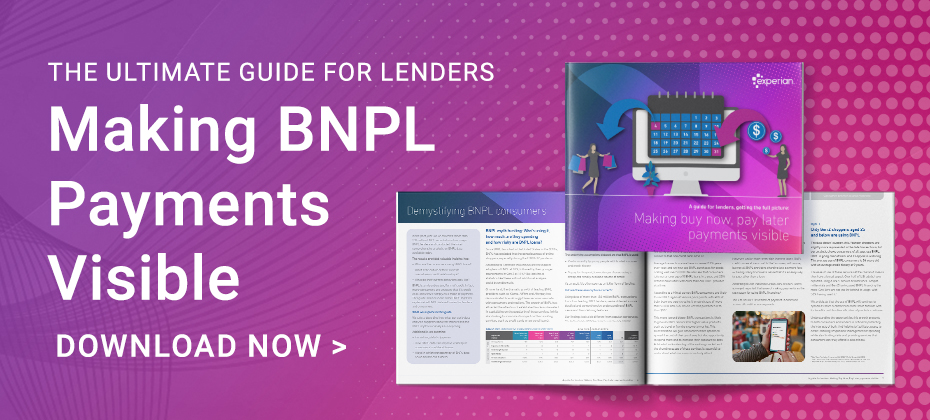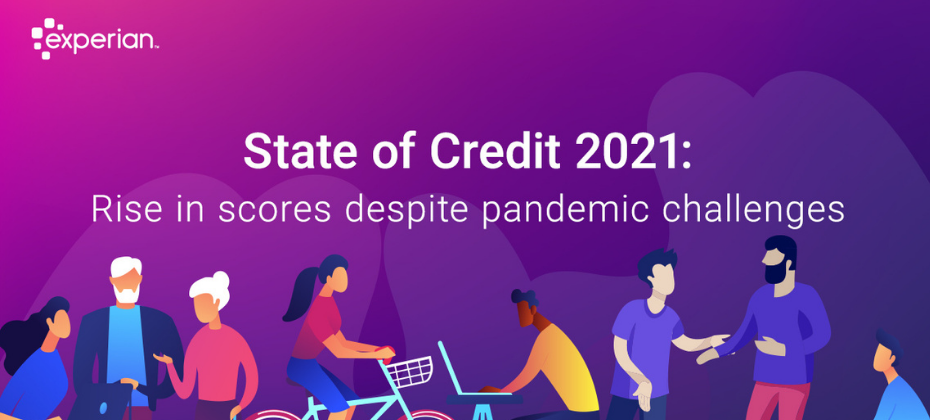Tag: consumer behavior

This article was updated on August 24, 2023. The continuous shift to digital has made a tremendous impact on consumer preferences and behaviors, with 81% thinking more highly of brands that offer multiple digital touchpoints. As a result, major credit card issuers are making creative pivots to their credit marketing strategies, from amplifying digital features in their card positioning to promoting partnerships and incentives on digital channels. But as effective as it is to reach consumers where they most frequent, credit card marketing will need to be more customer-centric to truly captivate and motivate audiences to engage. So, what does this innovative period of credit marketing mean for financial institutions? How can these institutions stand out in a competitive, ever-changing market? To target and acquire the right consumers, here are three credit card marketing strategies financial institutions should consider: Maximize share of voice through targeted approaches About half of consumers say personalization is the most important aspect of their online experience. Because today’s consumers are now expecting to engage digitally with brands, it’s important for financial institutions to not only be seen and mentioned on the right digital channels, but to deliver content that will resonate with their specific audiences. To do this, lenders must leverage fresh, comprehensive data sets to gain a more holistic view of consumers. This way, they can create targeted, customer-centric prescreen campaigns, allowing for enhanced personalization and increased response rates. Seek new opportunities to provide value to customers 77% of Gen Zers believe having an established credit history is important to being less financially dependent on their parents. Changes in consumer needs and lifestyles provide great opportunities to deliver value to customers. For example, younger consumers starting their credit journeys may look for brands that offer financial education or tools to help them build credit. Financial institutions that are open to pivoting their strategies to adapt to these needs and behaviors are those that will succeed in attracting new customers and maintaining long-lasting relationships with existing ones. Amplify points of differentiation in their products and marketing Before buying a product, consumers likely want to know more about the items they are purchasing and how they compare to different players in the market. To help set their products apart from other offerings, financial institutions should clearly define their product’s key differentiators and convey them in a personalized and compelling manner. Enhance your credit card marketing campaigns From identifying the right prospects to saturating your targeting criteria with data-rich insights, Experian offers credit marketing solutions to help you level up your campaigns and stand out from the competition. Learn more

This article was updated on August 9, 2023. Debt collections can be frustrating — for both consumers and lenders alike. Coupled with ever-changing market conditions and evolving consumer expectations for their digital experience, lending institutions and collections agencies must develop the right collections strategies to reduce costs and maximize recovery rates. How can they do this? By following the three Cs — communication, choice and control. Communication To increase response rates and successfully retrieve payments, lenders must cater to consumers’ preferences for communication, or more specifically, make the right type of contact at the right time. With debt collection predictive analytics, you can gain a more holistic view of consumers and further insight into their behavioral and contact channel preferences. This way, you can better assess an individual's propensity to pay, determine the best way and time to reach them and develop more personalized treatment strategies. Control Debt collection solutions that provide a more comprehensive customer view can also give individuals greater control as they’re able to engage with collectors via a channel that may be easier or more comfortable for them than a phone call, such as email, text or chatbots. Providing consumers with various options is especially important as 81% think more highly of brands who offer multiple digital touchpoints. To further improve your methods of communication, consider streamlining monotonous processes with collection optimization. By automating repetitive tasks and outreach, you can reduce errors and free up your agents’ time to focus on accounts that need more attention, creating a customer-centric collections experience. Choice Ultimately, the success of collections initiatives relies heavily on how well collection practices are accepted and adopted by the end user. Consumers want to make informed decisions and want to be offered choices – therefore giving them more control in a decision-making process and with their finances. “Consumers have made a monumental shift to digital. To enhance your collections performance, it is critical to engage consumers in the method and channel of their choosing,” said Paul Desaulniers, Head of Scoring, Alternative Data and Collections at Experian. Lending institutions and third-party collection agencies that are able to communicate across all consumer channels will see more success in their collections strategies. Are your debt collection tactics and strategies up-to-par? READ: Strengthening Your Debt Collection Strategy Improve your collections strategy By catering to consumers’ communication preferences, giving them control and offering them choices, financial institutions and collections agencies can more effectively reach their customer base, with less effort. It’s a win-win for all. Experian offers various debt management and collections systems that can help you optimize processes, reduce costs and increase recovery rates. To get started, visit us today. Learn more

Credit portfolio management has often involved navigating uncertainty, but some periods are more extreme than others. With the right data and analytics you can gain deeper insight into financial behaviors and risk to make better decisions and drive profitable growth. Along with access to an increasing amount of data, advanced analytics can help lenders more accurately: Forecast losses under different economic scenarios to estimate liquidity requirements. Identify fraud by detecting behaviors that could indicate identity theft, account takeover fraud, first-party or synthetic identity fraud. Incorporate real-time and alternative data,1 such as cash flow transaction data and specialty bureau data, in decisioning and scoring to accurately assess creditworthiness and expand your lending pool without taking on undue risk. Precisely segment consumers using internal and external data to increase automation during underwriting and identify cross-sell opportunities. Improve collections using AI-driven strategies and automated debt collection software to enhance operations and increase recovery rates. It’s imperative to take a proactive approach to portfolio monitoring. Monthly portfolio reviews with bureau scores, credit attributes and specialized scores — and using the results to manage credit lines and loan terms — are critical during volatile times. View our interactive e-book for the latest economic and consumer trends and learn how to set your portfolio up to succeed in any economic cycle. Download e-book 1"Alternative credit data" refers to the use of alternative data and its appropriate use in consumer credit lending decisions, as regulated by the Fair Credit Reporting Act. Hence, the term “expanded FCRA data" may also apply in this instance, and both can be used interchangeably.

BNPL is a misunderstood form of credit. In fact, many consumers are unaware that it is credit at all and view it simply as a mode of payment. This guide debunks common BNPL myths to explain what BNPL data will mean for lenders and consumers. In the past year, Experian collected more than 130 million buy now, pay later (BNPL) records from four major BNPL fintech lenders and conducted the most comprehensive analysis of BNPL data available today. The results provided valuable insights on: Who are the consumers using BNPL loans? What is the nature of their current mainstream credit relationships? What do their current BNPL behaviors look like? BNPL myth-busting: Who’s using it, how much are they spending and how risky are BNPL loans? Since BNPL launched in the United States in the 2010s, BNPL has exploded into the consciousness of online shoppers, especially during the COVID-19 pandemic. According to Forrester, Millennials are the biggest adopters of BNPL at 18%, followed by their younger counterparts in Gen Z at 11%.1 But looking at statistics like these without additional analysis could be problematic. The dramatic growth of leading BNPL fintechs such as Klarna, Affirm and Afterpay has demonstrated how strongly these services resonate with consumers and retailers. The growth of BNPL has attracted the attention of established lenders interested in capitalizing on the popularity of these services (while also looking to minimize its impact on their existing services, such as credit cards or personal loans). Meanwhile, the Consumer Financial Protection Bureau (CFPB) has urged caution about potential risks, calling for more consistent consumer protections market-wide and transparency into consumer debt accumulation and overextension across lenders. The underlying assumptions debated are that BNPL is used: Predominantly by young people with limited incomes and credit history To pay for frequent, low-value purchases using a cheap and readily available source of credit As a result, it is often seen as a riskier form of lending. But are these assumptions correct? Using data from more than 130 million BNPL transactions from four leading BNPL fintech lenders, we’ve obtained a more detailed and comprehensive understanding of BNPL users and their defining features. Our findings look somewhat different to the popular stereotypes. Myth 1: BNPL is used only for low-value purchases According to our analysis, most BNPL purchases, 95 percent are for items costing $300 or less.2 Some of it is low-value, but not all. In fact, we found that the average purchase using BNPL was similar to that of a credit card, at $132.Average transaction sizes have increased 10 percent year-over-year, and we now see BNPL purchases for goods costing well over $1,000. We also see that consumers take out an average of 5 BNPL loans in a year and 23 percent of them have loans with more than one BNPL provider at a time. Myth 2: BNPL is simply an easier payment method Consumers see BNPL as a simple, quick and convenient way to pay. But, as shoppers receive goods for which payment is deferred, it’s also a form of credit. However, unlike short-term high-interest loans, BNPL credit comes at zero cost to the borrower, with some, but not all BNPL fintech providers charging late payment fees – fueling many borrowers’ sense that it’s an easy way to pay, rather than a loan. Myth 3: Only Gen Z shoppers aged 25 and below are using BNPL Younger shoppers are slightly more represented in the data transactions, but our analysis shows consumers of all ages use BNPL. BNPL is going mainstream, and its appeal is widening. The average age of BNPL consumers is 36 years old, with an average credit history of 9 years.2 The ease of use of these services at the checkout means they have a broad appeal. Over half of U.S. adults have reported using a BNPL service at least once. Despite Millennials and Gen Z having used BNPL financing the most, Gen Xers are not too far behind in usage, with 52% having used it.2 We anticipate that in the use of BNPL will continue to grow as more customers become more familiar with the benefits, and the diversification of products continues. Understanding the opportunities this growth presents to both consumers and lenders is critical to protecting their interests. And helping to facilitate access to credit, enabling responsible spending, while also limiting risks and providing services that consumers can afford is also critical. Download the full guide for additional myths we’re exposing We will take a deep dive into what our early data analysis suggests about the market and the BNPL myths our analysis is exposing. Additionally, we will examine: Why BNPL data matters to providers and lenders How BNPL data can improve visibility of consumers’ creditworthiness Ways in which transparency of BNPL data could benefit consumers 1The Buy Now, Pay Later (BNPL) Opportunity,” Forrester Report, April 29, 2022.2Experian data and analytics derived from 130M+ BNPL transactions

"Out with the old and in with the new" is often used when talking about a fresh start or change we make in life, such as getting a new job, breaking bad habits or making room in our closets for a new wardrobe. But the saying doesn't exactly hold true in terms of business growth. While acquiring new customers is critical, increasing customer retention rates by just 5% can increase profits by up to 95%.1 So, what can your organization do to improve customer retention? Here are three quick tips: Stay informed Keeping up with your customers’ changing interests, behaviors and life events enables you to identify retention opportunities and create personalized credit marketing campaigns. Are they new homeowners? Or likely to purchase a vehicle within the next five months? With a comprehensive consumer database, like Experian’s ConsumerView®, you can gain granular insights into who your customers are, what they do and even what they will potentially do. To further stay informed, you can also leverage Retention TriggersSM, which alert you of your customers changing credit needs, including when they shop for new credit, open a new trade or list their property. This way, you can respond with immediate and relevant retention offers. Be more than a business – be human Gen Z's spending power is projected to reach $12 trillion by 2030, and with 67% looking for a trusted source of personal finance information,2 financial institutions have an opportunity to build lifetime loyalty now by serving as their trusted financial partners and advisors. To do this, you can offer credit education tools and programs that empower your Gen Z customers to make smarter financial decisions. By providing them with educational resources, your younger customers will learn how to strengthen their financial profiles while continuing to trust and lean on your organization for their credit needs. Think outside the mailbox While direct mail is still an effective way to reach consumers, forward-thinking lenders are now also meeting their customers online. To ensure you’re getting in front of your customers where they spend most of their time, consider leveraging digital channels, such as email or mobile applications, when presenting and re-presenting credit offers. This is important as companies with omnichannel customer engagement strategies retain on average 89% of their customers compared to 33% of retention rates for companies with weak omnichannel strategies. Importance of customer retention Rather than centering most of your growth initiatives around customer acquisition, your organization should focus on holding on to your most profitable customers. To learn more about how your organization can develop an effective customer retention strategy, explore our marketing solutions. Increase customer retention today 1How investing in cardholder retention drives portfolio growth, Visa. 2Experian survey, 2023.

Putting customers at the center of your credit marketing strategy is key to achieving higher response rates and building long-term relationships. To do this, financial institutions need fresh and accurate consumer data to inform their decisions. Atlas Credit was looking to achieve higher response rates on its credit marketing campaigns by engaging consumers with timely and personalized offers. The company implemented Experian’s Ascend Marketing, a customer marketing and acquisition engine that provides marketers with accurate and comprehensive consumer credit data to build and deploy intelligent marketing campaigns. With deeper insights into their consumers, Atlas Credit created timely and customized credit offers, resulting in a 185% increase in loan originations within the first year of implementation. Additionally, the company was able to effectively manage and monitor its targeting strategies in one place, leading to improved operational efficiency and lower acquisition costs. To learn more about creating better-targeted marketing campaigns and enhancing your strategies, read the full case study. Download the case study Learn more

Today's top lenders use traditional and alternative credit data1 – or expanded Fair Credit Reporting Act (FCRA) regulated data – including consumer permissioned data, to enhance their credit decisioning. The ability to gain a more complete and timely understanding of consumers' financial situation allows lenders to better gauge creditworthiness, make faster decisions and grow their portfolios without taking on additional risk. Why lenders need to go beyond traditional credit data Traditional credit data is — and will remain — important to understanding the likelihood that a borrower will repay a loan as agreed. However, lenders who solely base credit decisions on traditional credit data and scores may overlook creditworthy consumers who don't qualify for a credit score — sometimes called unscorable or credit invisible consumers. Additionally, they may be spending time and money on manual reviews for applications that are low risk and should be automatically approved. Or extending offers that aren't a good fit. What is consumer permissioned data? Consumer permissioned data, or user permissioned data, includes transactional and account-level data, often from a bank, credit union or brokerage account, that a consumer gives permission to view and use in credit decisioning. To access the data, lenders create secure connections to financial institutions or data aggregators. The process and approach give consumers the power to authorize (and later retract) access to accounts of their choosing — putting them in control of their personal information — while setting up security measures that keep their information secure. In return for sharing access to their account information, consumers may qualify for more financial products and better terms on credit offers. What does consumer permissioned data include? Consumers can choose to share different types of information with lenders, including their account balances and transaction history. While there may be other sources for estimated or historic account-level data, permissioned data can be updated in real-time to give lenders the most accurate and timely view of a consumer's finances. There is also a wealth of information available within these transaction records. For example, consumers can use Experian Boost™ to get credit for non-traditional bills, including phone, utility, rent and streaming service payments. These bills generally don't appear in traditional credit reports and don't impact every type of credit score. But seeing a consumer's history of making these payments can be important for understanding their overall creditworthiness. What are the benefits of leveraging consumer permissioned data? You can incorporate consumer permissioned data into custom lending models, including the latest explainable machine learning models. As part of a loan origination system, the data can help with: Portfolio expansion Accessing and using new data can expand your lending universe in several ways. There are an estimated 28 million U.S. adults who don't have a credit file at the bureaus, and an additional 21 million who have a credit file but lack enough information to be scorable by conventional scoring models. These people aren't necessarily a credit risk — they're simply an unknown. Increased insights can help you understand the real risk and make an informed decision. Additionally, a deeper insight into consumers' creditworthiness allows you to swap in applications that are a good credit risk. In other words, approving applications that you wouldn't have been able to approve with an older credit decision process. Increase financial inclusion Many credit invisibles and thin-file applicants also fall into historically marginalized groups.2 Almost a third of adults in low-income neighborhoods are credit invisible.3 Black Americans are much more likely (1.8 times) to be credit invisible or unscorable than white Americans.4 Recent immigrants may have trouble accessing credit in the U.S., even if they had a good credit history in their home country.5 As a result, using consumer permissioned data to expand your portfolio can align with your financial inclusion efforts. It's one example of how financial inclusion is good for business and society. Enhance decisioning and minimize risk Consumer-permissioned data can also improve and expand automated decisions, which can be important throughout the entire loan underwriting journey. In particular, you may be able to: Verify income faster: By linking to consumers’ accounts and reviewing deposits, lenders can quickly verify their income and ability to pay. Make better decisions: Consumer permissioned data also give lenders a new lens for understanding an applicant’s credit risk, which can let you say yes more often without taking on additional risk. Process more applications: A better understanding of applicants’ credit risk can also decrease how many applications you send to manual review, which allows you to process more applications using the same resources. Increase customer satisfaction: Put it all together, and faster decisions and more approvals lead to happier customers. While consumer permissioned data can play a role in all of these, it's not the only type of alternative data that lenders use to grow their portfolios. What are other types of alternative data sources? In addition to consumer permissioned data, alternative credit data can include information from: Alternative financial services: Credit data from alternative financial services firms includes information on small-dollar installment loans, single-payment loans, point-of-sale financing, auto title loans and rent-to-own agreements. Rental agreement: Rent payment data from landlords, property managers, collection companies and rent payment services. Public records: Full-file public records go beyond what’s in a consumer’s credit report and can include professional and occupational licenses, property deeds and address history. Why partner with Experian? As an industry leader in consumer credit and data analytics, Experian is continuously building on its legacy in the credit space to help lenders access and use various types of alternative data. Along with Experian Boost™ for consumer permissioned data, Experian RentBureau and Clarity Services are trusted sources of alternative data that comply with the FCRA. Experian also offers services for lenders that want help understanding and using the data for marketing, lending and collections. For originations, the Lift Premium™ credit model can use alternative credit data to score over 65% of traditionally credit-invisible consumers. Expand your lending universe Lenders are turning to new data sources to expand their portfolios and remain competitive. The results can provide a win-win, as lenders can increase approvals and decrease application processing times without taking on more risk. At the same time, these new strategies are helping financial inclusion efforts and allowing more people to access the credit they need. Learn more 1When we refer to “Alternative Credit Data," this refers to the use of alternative data and its appropriate use in consumer credit lending decisions, as regulated by the Fair Credit Reporting Act. Hence, the term “Expanded FCRA Data" may also apply in this instance and both can be used interchangeably.2-5Oliver Wyman (2022). Driving Growth With Greater Credit Access

Rapid improvements in technology and the rise in online activity are driving higher consumer expectations for fast and frictionless digital experiences. And yet, only 50% of credit unions are executing on a digital strategy compared to 79% of banks.1 What can credit unions do to stand out from the competition and keep up with increasing consumer demands? 23% of consumers say their expectations for the digital experience have only somewhat or not at all been met.2 The answer lies in digital prequalification. With a frictionless digital prequalification solution, members can prequalify themselves online in real time before starting the formal application process. This puts members in the driver’s seat, allowing them to see their eligibility for credit offers and choose whether they’d like to proceed with the application. By delivering immediate feedback and offers to members online, credit unions can increase response rates, improve digital engagement and enhance the prequalification experience. Case Study: Achieving growth through a seamless digital prequalification experience Gather Federal Credit Union is the largest neighbor-island credit union in Hawaii, providing financial products and services to more than 35,000 members. Wanting to grow more loans while providing members with a seamless and efficient online experience, the credit union looked for a comprehensive solution that could improve their decisioning and enhance their prequalification strategy. They partnered with Experian and Rate Reset to implement a frictionless digital experience that enables members to opt-in for prequalified offers. Leveraging the power of Experian’s PowerCurve® and Rate Reset’s The ButtonTM, Gather had flexible access to consumer data, attributes and scores, allowing them to verify user identities and match members with loan products before their application formally went through the credit underwriting process. By gaining a better understanding of which credit options they prequalified for, members were able to opt-in instantly, creating a faster, more personalized digital prequalification experience. Within three weeks of implementation, Gather booked over $600,000 in new personal loans and credit cards. Additionally, of all the applicants that passed the credit union’s credit prequalification criteria, 54% accepted their offer and received a loan. “With a few clicks, members and non-members alike can instantly prequalify themselves for a loan. We’re extremely pleased with this offering, which has enabled us to extend our reach and grow the Gather community,” said Justin Ganaden, Executive Vice President, Gather Federal Credit Union. Read the full case study to learn more about how Experian can help grow your business with a frictionless digital prequalification experience. Download the full case study 1 https://www.big-fintech.com/Media/BIG-News/ArticleID/779/New-Digital-Banking-Platform Digital Transformation Revolution – Is it Leaving Credit Unions Behind? 2 2022 Global Insights Report, Experian, 2022.

For decades, the credit scoring system has relied on traditional data that only examines existing credit captured on a credit report – such as credit utilization ratio or payment history – to calculate credit scores. But there's a problem with that approach: it leaves out a lot of consumer activity. Indeed, research shows that an estimated 28 million U.S. adults are “credit invisible," while another 21 million are “unscorable."1 But times are changing. While conventional credit scoring systems cannot generate a score for 19 percent of American adults,1 many lenders are proactively turning to expanded FCRA-regulated data – or "alternative data" – for solutions. Types of expanded FCRA-regulated data By tapping into technology, lenders can access expanded FCRA-regulated data, which offers a powerful and complete view of consumers' financial situations. Expanded public record data This can include professional and occupational licenses, property deeds and address history – a step beyond the limited public records information found in standard credit reports. Such expanded public record data is available through consumer reporting agencies and does not require the customer's permission to use it since it's a public record.1 “Experian has partnerships with these agencies and can access public records that provide insight into factors like income and housing stability, which have a direct correlation with how they'll perform," said Greg Wright, Chief Product Officer for Experian Consumer Information Services. “For example, lenders can see if a consumer's professional license is in good standing, which is a strong correlation to income stability and the ability to pay back a loan." Rental payment data Experian RentBureau draws updated rental payment history data every 24 hours from property managers, electronic rent payment services and collection companies. It can also track the frequency of address changes. “Such information can be a good indicator of risk," said Wright. “It allows lenders to make informed judgments about the financial health and positive payment history of consumers." Consumer-permissioned data With permission from consumers, lenders can look at different types of financial transactions to assess creditworthiness. Experian Boost™, for example, enables consumers to factor positive payment history, such as utilities, cell phone or even streaming services, into an Experian credit file. “Using the Experian Boost is free, and for most users, it instantly improves their credit scores," said Wright. “Overall, those 'boosted' credit scores allow for fairer decisioning and better terms from lenders – which gives customers a second chance or opportunity to receive better terms." Financial Management Insights Financial Management Insights considers data that is not captured by the traditional credit report such as cash flow and account transactions. For instance, this could include demand deposit account (DDA) data, like recurring payroll deposits, or prepaid account transactions. “Examining bank account transaction data, prepaid accounts, and cash flow data can be a good indicator of ability to pay as it helps verify income, which gives lenders insights into consumers' cash flow and ability to pay," Wright added. Clarity Credit Data With Experian's Clarity Credit Data, lenders can see how consumers use expanded FCRA-regulated data along with their related payment behavior. It provides visibility into critical non-traditional loan information, including more insights into thin-file and no-file segments allowing for a more comprehensive view of a consumer's credit history. Lift Premium™ By using multiple sources of expanded FCRA-regulated data to feed composite scores, along with artificial intelligence and machine learning, Lift Premium™ can vastly increase the number of consumers who can be scored. For example, research shows that Lift Premium™ can score 96 percent of American adults – a significant increase from the 81 percent that are scorable with conventional scores relying on only traditional credit data. Additionally, such enhanced composite scores could enable 6 million of today's subprime population to qualify for “mainstream" (prime or near-prime) credit.1 How is expanded FCRA-regulated data changing the credit scoring system? The current credit scoring system is rapidly evolving, and modern technology is making it easier for lenders to access expanded FCRA-regulated data. Indeed, this data disruption is changing lender business in a positive way. “When lenders use expanded credit data assets, they see that many unscorable and credit invisible consumers are in fact creditworthy," said Wright. “Layering in expanded FCRA-regulated data gives a clearer picture of consumers' financial situation." By expanding data assets, tapping into artificial intelligence and machine learning, lenders can now score many more consumers quickly and accurately. Moreover, forward-thinking lenders see these expanded data assets as offering a competitive edge: it's estimated that modern credit scoring methods could allow lenders to grow their pool of new customers by almost 20 percent.1 Case study: Consumer-permissioned data To date, over 9 million people have used Experian Boost. The technology uses positive payment history as a way to recognize customers who exhibit strong credit behaviors outside of traditional credit products. “Boosted" consumers were able to add on average 14 points to their FICO scores in 2022 so far, making many eligible for additional financial products with better terms or better product offerings. Active Boost consumers, post new origination performed on par or better than the average U.S. originator, consistently over time. “In other words, having this additional lens into a consumer's financial health means lenders can expand their customer base without taking on additional credit risk," explains Wright. The bottom line The world of credit data is undergoing a revolution, and forward-thinking lenders can build a sound business strategy by extending credit to consumers previously excluded from it. This not only creates a more equitable system, but also expands the customer base for proactive lenders who see its potential in growing business. Learn more 1Oliver Wyman white paper, “Financial Inclusion and Access to Credit,” January 12, 2022.

As more consumers apply for credit and increase their spending1, lenders and financial institutions have an opportunity to expand their portfolios and improve profitability. The challenge is ensuring they’re extending credit responsibly and inclusively. Millions of Americans, many of whom are creditworthy, lack access to mainstream credit options. This may be because they have limited or no credit history, negative information within their credit file, or are a part of a historically disadvantaged group. To say “yes” to consumers they otherwise couldn’t or wouldn’t lend to, lenders must gain a deeper understanding of an individual’s stability, ability and willingness to pay. That’s where expanded FCRA-regulated and trended data come in. While traditional credit data has long been the primary means of gauging creditworthiness, it doesn’t tell the full story of a consumer’s financial situation. Let’s explore how differentiated data can help lenders make more informed credit decisions. Using differentiated data for deeper lending Expanded FCRA-regulated data provides supplemental credit data to help lenders gain a more holistic view of their current and prospective customers. Some examples of expanded FCRA-regulated data include alternative financial services data from nontraditional lenders, consumer-permissioned account data, rental payments and full-file public records. Because this data drives greater visibility and transparency around inquiry and payment behaviors, lenders can more accurately determine a consumer’s ability to pay and distinguish between reliable and high-risk applicants. In turn, lenders can approve more creditworthy consumers, grow their portfolios and increase financial opportunities for underserved communities, all while preventing and mitigating risk. 89% of lenders agree that expanded FCRA-regulated data allows them to extend credit to more consumers. Trended data empowers lenders with predictive insights into consumers by providing key balance and payment data for the previous 24 months. This is important as lenders can determine if a consumer’s credit behavior has improved or deteriorated over time. In turn, lenders can: Identify creditworthy customers: Establish if a consumer has a demonstrated ability to pay, is consistently paying more than the minimum payment, or shows no signs of payment stress. Increase response rates: Match the right products with the right prospects. Determine upsell and cross-sell opportunities: Present relevant offers based on anticipated needs and behaviors. Limit loss exposure: Understand the direction and velocity of payment performance to effectively manage risk exposure. Trended data helps lenders better predict future behavior, manage portfolio risk and design the best marketing offers. Turning insights into action Together, trended and expanded FCRA-regulated data benefit lenders and consumers alike. With a more holistic view of their customers, lenders gain powerful insights to lend deeper, ultimately helping them to expand their portfolios and drive greater access to credit for underserved communities. Learn more 1 The Recovery of Credit Applications to Pre-Pandemic Levels, Consumer Financial Protection Bureau, 2021.

Who said that direct mail was dead? Though consumers have flooded to digital channels since the onset of the pandemic, with 55% now having a higher expectation of their customer experience, traditional methods shouldn't be cast aside. On the other hand, sending printed mail without adapting to consumer demands may leave recipients disengaged and less likely to act. So, where does that leave marketers? How can businesses create a balance between traditional and digital credit marketing? Before diving into that discussion, it’s important to note that direct mail is still effective and when done right, can help businesses win the hearts and wallets of today’s consumers. According to the U.S. Postal Service’s (USPS) Certified Direct Mail Professional (CDMP) program, 79% of households say they read their daily mail, while 70% of recipients are curious to find out what’s in their mailbox. So, how can credit card marketers capitalize on these trends to generate higher response rates and returns from their direct mail campaigns? It’s simple – businesses must weave interactive elements and technology into their direct mail pieces to make them more effective and engaging. Here’s how credit card issuers are leveraging technology to level up their direct mail campaigns: QR codes QR codes, which allow consumers to read restaurant menus and make touchless payments with their mobile devices, have become a global sensation, with the number of interactions having grown 94% between 2018-2020. More recently, credit card marketers have included interactive QR codes into their direct mail pieces, allowing recipients to learn more about the offer, download their mobile app or quickly apply for a credit card. A few brands took it a step further by matching their QR codes with the colors of their logos to add more brand recognition and personalization. Voice Activated Call to Action (VACTA) According to Mintel, over 25% of U.S. adults own at least one smart speaker. To capitalize on this trend, many credit card issuers have included a Voice Activated Call to Action (VACTA) in their direct mail pieces. A VACTA allows recipients to respond to direct mail offers verbally by using their Amazon Alexa or Google Assistant device. Instead of reaching for their smartphones or laptops, consumers can call out to their smart speaker with the offer code. This low-effort, hands-free method is a quick and convenient way for consumers to engage with businesses as it enables them to respond to offers even when they are performing other tasks. Once their smart speaker receives the code, a link is then sent to the consumer’s phone so that they can examine the offer at any time. Giving consumers more flexibility enhances their experience and increases the chances of them responding to future offers. Additionally, including a VACTA in direct mail pieces allows marketers to manage, track and optimize their marketing campaigns in real-time. Because VACTAs make offers immediately redeemable, businesses can easily measure the performance and effectiveness of each direct mail piece. Informed Delivery emails What better way to build anticipation and excitement for direct mail offers than to give consumers a sneak peek of what’s to come? USPS’s Informed Delivery is a service that allows consumers to digitally preview their direct mail before it arrives in their physical mailbox. Until the physical mail piece is delivered, consumers can look at what the mailing might reveal or offer to them through email, an online dashboard or a mobile app. The best part? Informed Delivery emails meet today’s consumer expectations for convenient digital experiences as they are available to view them anytime, anywhere. Currently, one in five households has an Informed Delivery participant. What’s more, the average open rate for an Informed Delivery email is nearly 70%. By incorporating Informed Delivery into direct mail campaigns, businesses can generate additional impressions, improve customer engagement and drive more conversions. Doing direct mail, the right way Direct mail isn’t outdated, antique or ineffective – it has evolved and adapted to meet the expectations of today’s consumers. The use of QR codes, VACTA and USPS Informed Delivery, are just a few examples of how credit card marketers are leveraging digital enhancements to improve the success of their direct mail campaigns. While it’s clear that direct mail is still an effective way to reach consumers, businesses should not overlook the power of digital marketing. Expectations for seamless and connected digital experiences are higher than ever, making it crucial for businesses to develop strong digital marketing strategies. By engaging with consumers in the way that works best for them, with the right messages at the right time, you can drive more opportunities, reduce costs and deliver exceptional customer experiences. Learn more Download white paper

Despite an unprecedented 18 months since the pandemic was in full force and many Americans were sent home, financial wellness continues to be on the up and up. Consumers continue to manage credit well and the average credit score climbed seven points since 2020 to 695, the highest point in more than 13 years. In Experian’s 12th annual State of Credit report, the headlines are hopeful regarding how Americans are managing personal finances in the face of the pandemic. The report provides a comprehensive look at the credit performance of consumers across America by highlighting consumer credit scores and borrowing behaviors. This year’s report features data from 2019 pre-pandemic, the 2020 pandemic year, and the start of 2021. “The findings from this year’s report show something I’ve always believed: Americans are resilient, for the most part they make smart decisions in the face of adversity and they are agile in adjusting their financial habits when the environment or circumstances change,” said Alex Lintner, President, Experian Consumer Information Services. Highlights of Experian’s State of Credit report: 2021 State of Credit Report 2019 2020 2021 Average VantageScore® credit score [1] 682 688 695 Median VantageScore® credit score 687 697 707 Average number of credit cards 3.0 3.0 3.0 Average credit card balance $6,494 $5,897 $5,525 Average revolving utilization rate 30% 26% 25% Average number of retail credit cards 2.50 2.42 2.33 Average retail credit card balance $1,930 $2,044 $1,887 Average nonmortgage debt $25,057 $25,483 $25,112 Average mortgage debt $210,263 $215,655 $229,242 Average auto loan or lease $19,034 $19,462 $20,505 Average 30–59 days past due delinquency rates 3.8% 2.4% 2.3% Average 60–89 days past due delinquency rates 1.9% 1.3% 1.0% Average 90–180 days past due delinquency rates 6.6% 3.8% 2.5% We asked Joseph Mayans, Principal Economist at Advantage Economics, LLC, for his reactions to the findings: “The State of Credit Report captures the three central themes of the pandemic. First, it shows the overwhelming success of the fiscal support packages. By far, the most striking example of this is the broad based and significant decline in delinquencies during a time when millions of people were out of work. Second, the report showcases the resiliency of American households. People used their stimulus dollars to stay on top of their bills and pay down debt, which boosted average credit scores across all generations. And third, it highlights the unique behavioral shifts brought on by the pandemic. We can see these changes in the rise of housing and auto debt as people bought larger homes and sought to drive rather than ride public transportation.” Generational Trends As indicated in the findings, consumers across all generations except Gen Z saw decreased utilization rates and decreased credit card balances year over year. Consumers are also missing fewer payments with notable improvements seen among the youngest consumers. Mortgage debt was up across every generation, which may correlate with the record low interest rates on mortgages, refinances and moves. According to the CBRE, “the pandemic accelerated several long-standing American migration patterns” as evidenced by more than 15.9 million people filing change-of-address requests with the United States Postal Service. Compared with 2019, 2020 change-of-address requests show a 4% increase in total movers, 2% increase in permanent movers and 27% increase in temporary movers, according to a study by MyMove. Mayans also made note of the mortgage trends. “It’s becoming clearer that millennials are stepping into the homebuying phase in a big way. Once thought to be the generation of apartments and urban revival, many older millennials are now buying homes and moving to the suburbs much like their parents before them,” Mayans said. “This will have significant implications for the post-pandemic world, especially as work from home becomes more prevalent.” State Trends The states with the highest and lowest average credit score remained unchanged from last year with the highest average score of 726 held by Minnesota and an average score of 666 held by Mississippi. New Jersey had the highest number of credit cards and retail cards at 3.37 and 2.54 respectively, and Alaska had the highest credit card debt at $7,089 (U.S. average is $5,525) and Texas had the highest retail debt at $2,248 (U.S. average is $1,888). What Lies Ahead Some have argued that the past year of the pandemic and quarantine forced a lot of time for reflection. The continued positive trends of consumer behavior seem to indicate some of that effort was put toward better financial health practices. That said, like any sourdough bread recipe or DIY home glow-up, there’s always more to learn and opportunities to seize when it comes to financial health. “We are committed to working with lenders and the industry to help consumers gain access to credit, driving broader financial inclusion, while also teaching consumers how to responsibly build and use credit responsibly,” Lintner said. In addition to the free weekly credit report at AnnualCreditReport.com, Experian also offers consumers free access to their credit report and ongoing credit monitoring at Experian.com. Additional credit education resources and tools Join Experian’s #creditchat hosted by @Experian on Twitter with financial experts every Wednesday at 3 p.m. Eastern time. Bilingual and Spanish speakers are also invited to join Experian’s monthly #ChatdeCredito hosted on Twitter at 3 p.m. Eastern time beginning September 16. Visit the Ask Experian blog for answers to common questions, advice and education about credit. Add positive telecom, utility and streaming service payments to your Experian credit report for an opportunity to improve your credit scores by visiting experian.com/boost[2] For additional resources, visit https://www.experian.com/consumereducation To see all the findings, download the 2021 State of Credit Report. Download the full report [1] VantageScore® is a registered trademark of VantageScore Solutions, LLC. VantageScore® credit score range is 300 to 850. [2] Results may vary. See Experian.com for details

The surge in digital demand over the past year reinforced the deep connection between recognition, fraud prevention and the online customer experience. As businesses transformed their operations to accommodate the rapidly growing volume of digital transactions, consumer expectations for easy, secure interactions increased at an even faster pace. That meant less tolerance for the interruptions caused by security and risk controls. We surveyed more than 9,000 consumers and 2,700 businesses worldwide about this connection for our 2021 Global Identity and Fraud Report. This year’s report dives into: Business priorities for the year ahead Why the digital customer experience remains siloed Consumer preferences that impact the digital customer journey Pandemic-era digital activities that have changed consumer expectations As we move forward into the rest of 2021 it’s crucial that businesses continue to focus on fraud prevention. In order to implement an effective fraud strategy that also makes it easier for customers to engage, businesses need to move away from a one-size-fits-all approach and focus on applying the right level of protection to each and every transaction. Download the report Review your fraud strategy

According to Experian’s latest Global Insights Report, 38% of consumers expect to increase their online activity in the next 12 months. The report also found that consumers continue to have high expectations for their online experience, and businesses are re-imagining the customer journey to reflect that need. This January, Experian surveyed 3,000 consumers and 900 businesses to explore the changes in consumer behavior and business strategy pre- and post-COVID-19. As consumers have embraced life online, they’ve continued to emphasize their feelings regarding the importance of protecting their information. More than half of consumers still consider security to be the most important factor in their digital experience – the same experience they have such high expectations of. Business are acting in turn, with more than half investing in fraud detection methods or software to reduce friction in the customer experience. Digital transformation is also highlighting the need to: Manage regulatory compliance Integrate security measures Ensure access to AI models Attract and manage customers Integrate automation solutions Download the report to get all the latest insights into consumer desires and business behaviors, and keep visiting the Insights blog for a deeper dive into US-specific findings. Download report

Small SUVs became the most financed vehicle segment in Q3 2020, making up 26.01% of all financed vehicles during the quarter.